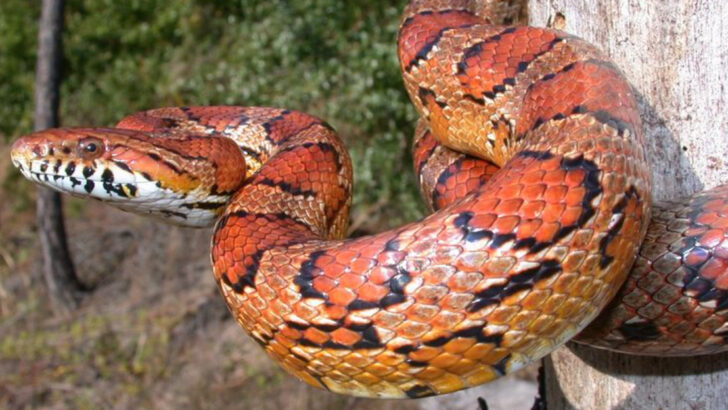South Carolina’s wild beauty hides a thrilling danger—venomous snakes that slither through its forests, swamps, and lakes.
These creatures are as fascinating as they are deadly, each one a master of survival in the wild. Whether you’re hiking along a trail or relaxing by a quiet stream, a snake might just cross your path—giving you a rush of adrenaline you won’t soon forget.
From the deadly copperhead to the strikingly beautiful timber rattlesnake, each species has its own unique traits and habits. The sheer variety of venomous snakes in South Carolina will make you look twice before stepping into the wild.
Brace yourself for a journey through the dangerous and captivating world of 19 venomous snakes that call this state home—some you’ll want to admire from a safe distance.
Eastern Diamondback Rattlesnake
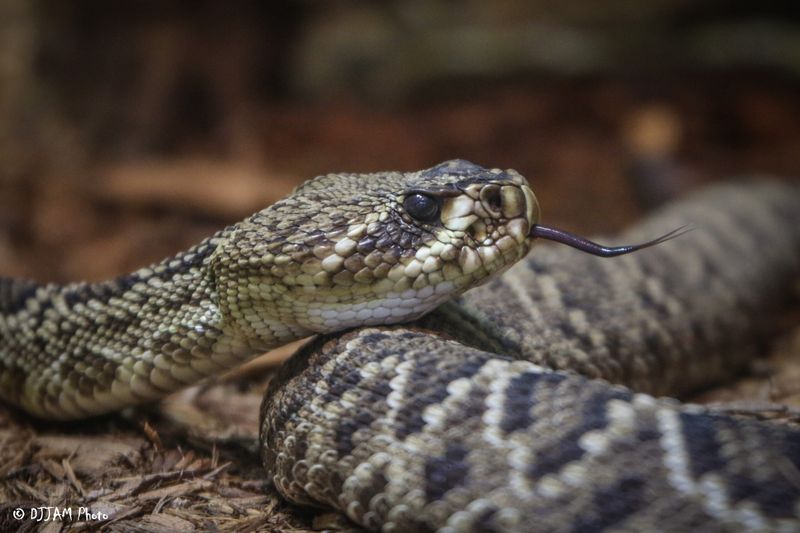
Known for its impressive size and distinct diamond pattern, the Eastern Diamondback Rattlesnake is a formidable presence in South Carolina’s pine flatwoods. These snakes can grow up to 8 feet long, and their rattles serve as a warning to those who come too close.
With a preference for dry, sandy habitats, they’re often encountered by hikers enjoying the state’s natural beauty. Their bites can be extremely dangerous, so maintaining a respectful distance is key.
Interestingly, the Eastern Diamondback is an ambush predator, relying on its camouflage to surprise prey like rabbits and squirrels.
Timber Rattlesnake
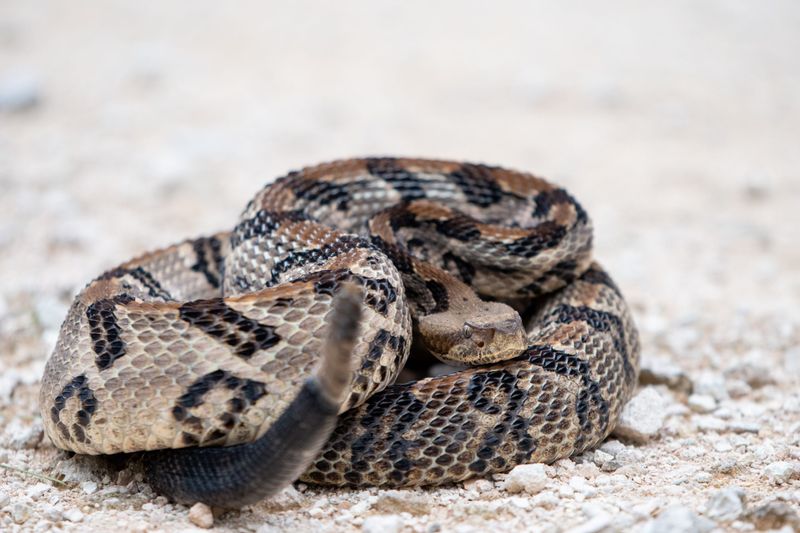
The Timber Rattlesnake is a master of blending in, often spotted in the dense forests of South Carolina. Its banded body and calm demeanor make it a fascinating but potentially dangerous encounter for those venturing off the beaten path.
These snakes are known for their patience, waiting motionless for hours until prey comes within striking distance. Although generally shy, a Timber Rattlesnake will defend itself if threatened.
During the fall, they gather in groups to seek out hibernation dens, a behavior that adds to their mystique and allure.
Cottonmouth
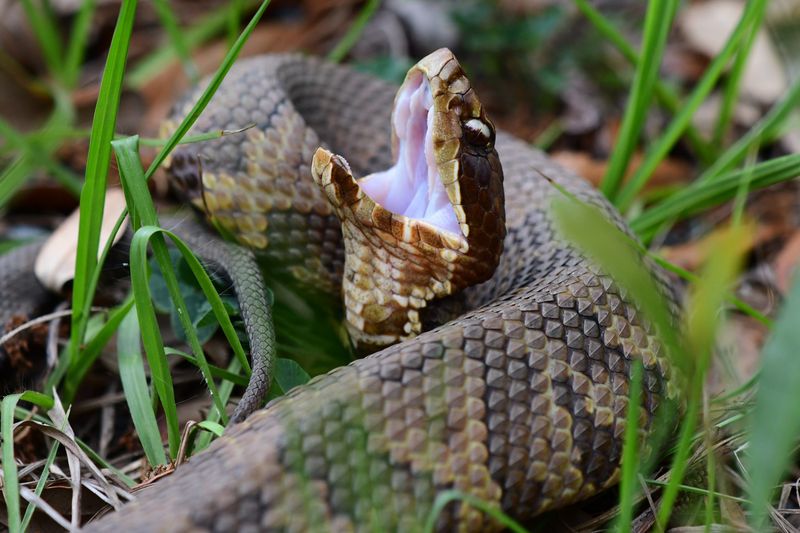
Also known as the Water Moccasin, the Cottonmouth is one of South Carolina’s most notorious venomous snakes. It thrives in swamps and wetlands, often swimming with its head above water.
The name ‘Cottonmouth’ comes from its habit of displaying the white interior of its mouth when threatened. Though its bite is rarely fatal, it causes significant pain and discomfort.
With a diet that includes fish and frogs, the Cottonmouth plays a vital role in its ecosystem, controlling prey populations in its watery habitat.
Copperhead
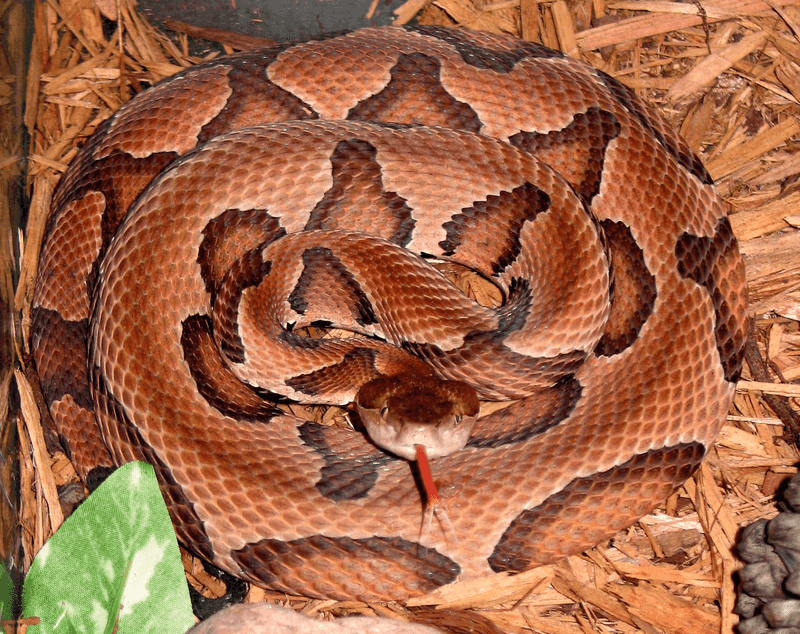
Copperheads, with their coppery bands and affinity for leaf-littered forest floors, are a common sight in South Carolina. These snakes are masters of camouflage, easily mistaken for a pile of leaves.
Though their venom is mild compared to other species, a bite can still be quite painful. Copperheads have a curious nature and may freeze when encountered, making them appear almost harmless.
They primarily hunt small rodents and insects, using their heat-sensing pits to locate prey even in the dark of night.
Pigmy Rattlesnake
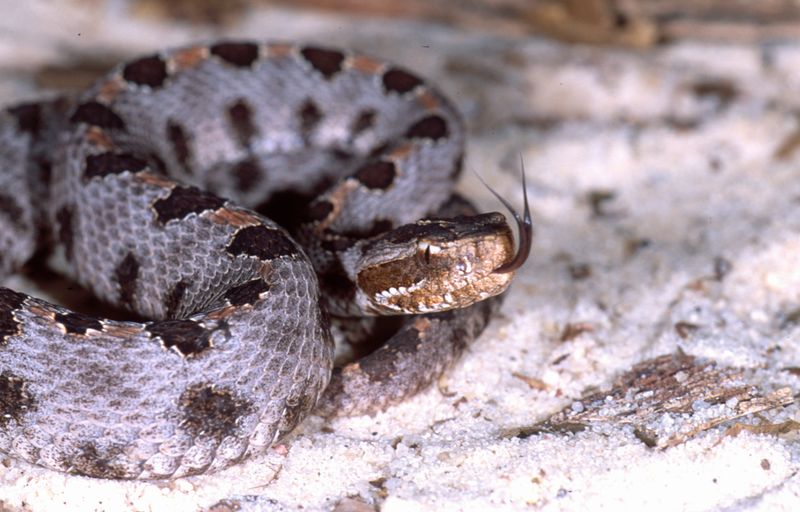
Despite its small size, the Pigmy Rattlesnake commands respect with its vibrant scale patterns and quick strikes. Found in woodlands and coastal areas of South Carolina, this snake is often hidden under leaf litter.
Its rattle is so tiny that it can be challenging to hear, making it a stealthy presence in its habitat. While not as dangerous as larger rattlers, its bite is nonetheless painful.
Pigmy Rattlesnakes feed on small frogs and insects, contributing to the balance of their ecosystems by keeping prey populations in check.
Canebrake Rattlesnake
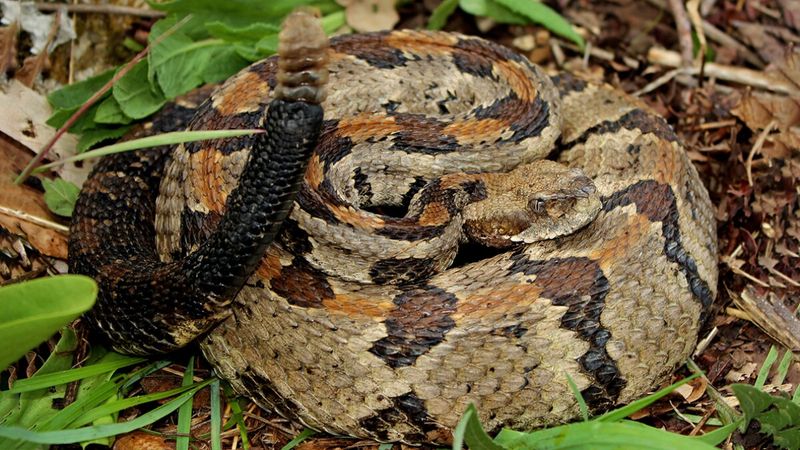
The Canebrake Rattlesnake, a southern variant of the Timber Rattlesnake, is known for its beautiful crossbands and a distinctive rusty stripe. This snake inhabits the lowland swamps and upland forests of South Carolina.
It is a patient predator, often lying in wait for unsuspecting small mammals. Though generally docile, it will defend itself vigorously if provoked.
During cooler months, the Canebrake seeks out shelter in rock crevices or burrows to hibernate, showcasing a fascinating aspect of its life cycle.
Eastern Coral Snake
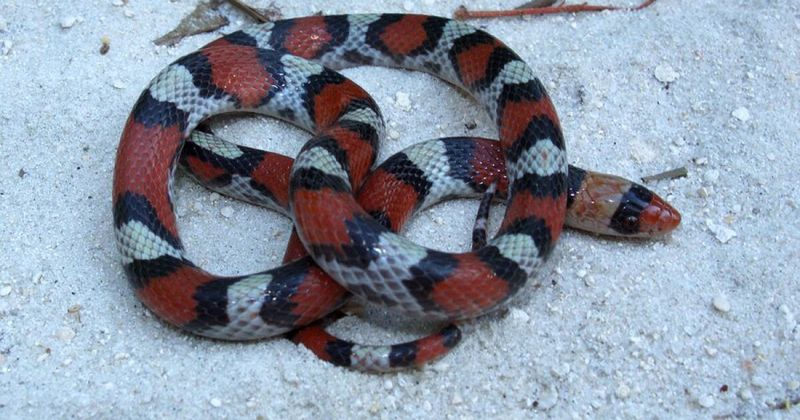
With its striking red, yellow, and black bands, the Eastern Coral Snake is both beautiful and deadly. This elusive snake is found in the sandy soils and pine forests of South Carolina.
Unlike pit vipers, Coral Snakes have neurotoxic venom, which affects the nervous system, making their bites potentially life-threatening. Their shy nature means they are rarely encountered by humans.
Remembering the rhyme, “Red touch yellow, kill a fellow,” is a useful way to identify this species and avoid confusing it with harmless mimics.
Dusky Pigmy Rattlesnake

The Dusky Pigmy Rattlesnake is a small but formidable resident of South Carolina’s woodlands. Its dusky hues and dark spots offer perfect camouflage among the forest floor’s debris.
Though its rattle may be hard to detect, the Dusky Pigmy is quick to strike if threatened. While its venom is potent, it is not typically life-threatening to humans.
This snake’s diet consists mainly of small mammals and amphibians, playing a crucial role in controlling these populations within its natural habitat.
Southern Copperhead
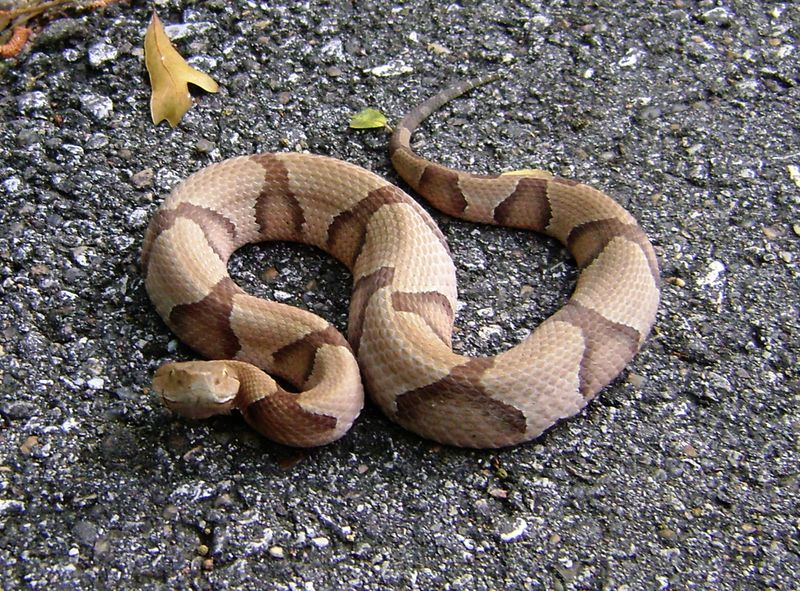
The Southern Copperhead, a subspecies of the Copperhead, is known for its vivid copper-colored bands and distinctive triangular head. It frequents rocky areas and forests throughout South Carolina.
Though non-aggressive, this snake is known for its defensive strikes when feeling cornered. Its venom is not typically fatal, but medical attention is recommended following a bite.
Feeding on rodents, birds, and insects, the Southern Copperhead’s hunting skills are enhanced by its heat-sensing pits, allowing for precise targeting of prey.
Carolina Kingsnake
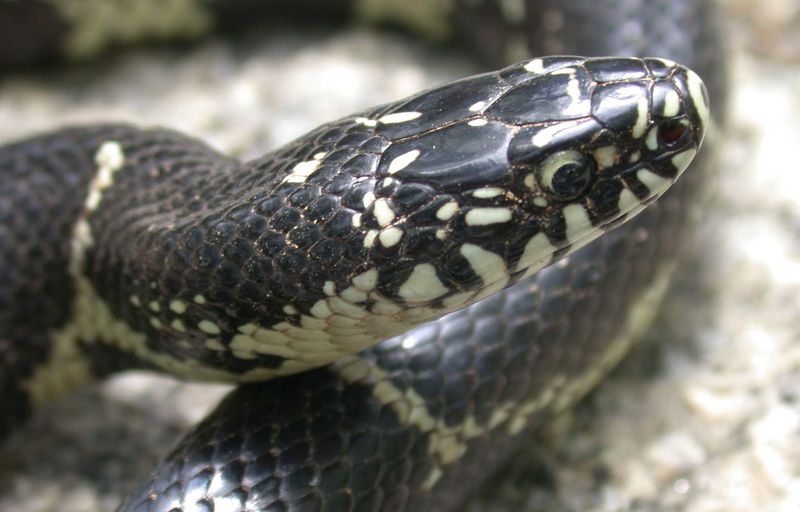
The Carolina Kingsnake is a master of disguise. Its black and white banding pattern allows it to blend seamlessly into the forest floor, making it a skilled hunter. This snake is non-venomous but often mistaken for more dangerous species due to its similar coloring.
Found throughout South Carolina, the Carolina Kingsnake thrives in a variety of habitats, from wooded areas to suburban backyards. It plays an important role in controlling rodent populations, thus maintaining ecological balance.
Fun fact: The Carolina Kingsnake is immune to the venom of other snakes, allowing it to prey on them, including venomous ones! This adaptability and resilience make it a fascinating subject of study.
Black-tailed Rattlesnake
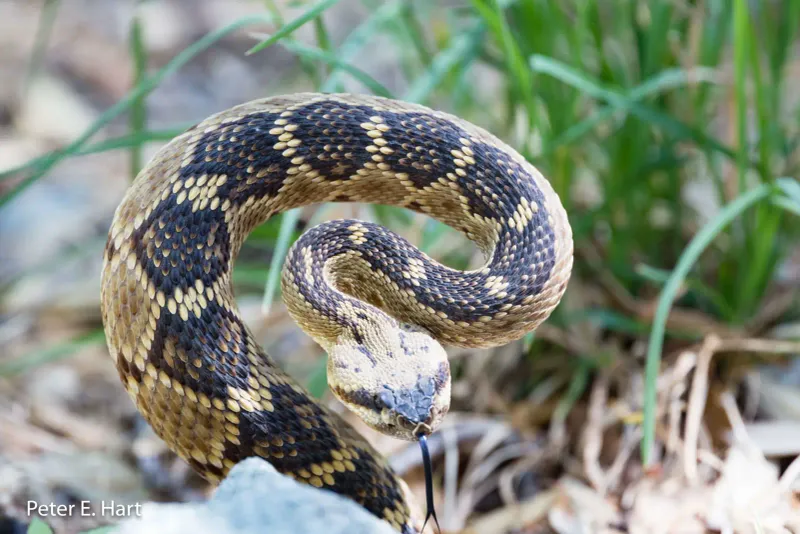
Native to the rocky terrains of South Carolina, the Black-tailed Rattlesnake is recognized by its unique dark tail and intricate scale patterns.
Despite being a venomous species, it is more inclined to avoid confrontation, often using its distinctive rattle as a warning to potential threats. Its diet primarily includes small mammals, birds, and reptiles.
Notably, this snake uses its cryptic coloration as camouflage, blending perfectly with the rocky landscapes, making it an adept predator in its environment.
Eastern Hognose Snake

The Eastern Hognose Snake is as much an actor as it is a reptile. Known for its theatrical defense tactics, this snake will flatten its neck, hiss loudly, and even play dead to deter predators. Despite these alarming behaviors, it’s completely harmless to humans.
This snake’s preferred habitats are sandy soils and pine forests, where it feasts on toads and other small creatures. Its unique upturned snout is perfectly adapted for burrowing and rooting in the sand.
Interesting tidbit: The Eastern Hognose Snake is often called the “puff adder” due to its ability to inflate its body when threatened, a fantastic example of nature’s ingenuity in survival.
Banded Water Snake
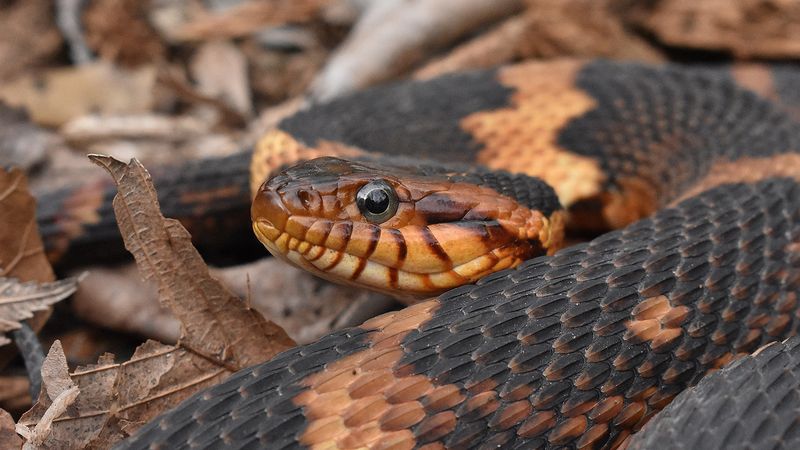
Although not venomous, the Banded Water Snake is often mistaken for the Cottonmouth due to its similar habitat and appearance. Found in ponds and streams across South Carolina, it’s a common sight for nature enthusiasts.
Its diet mainly consists of fish and amphibians, contributing to the balance of aquatic ecosystems. The Banded Water Snake is generally shy, choosing to flee rather than confront threats.
This snake displays a remarkable agility in water, making it an adept hunter and a fascinating subject for wildlife observation.
Eastern Massasauga
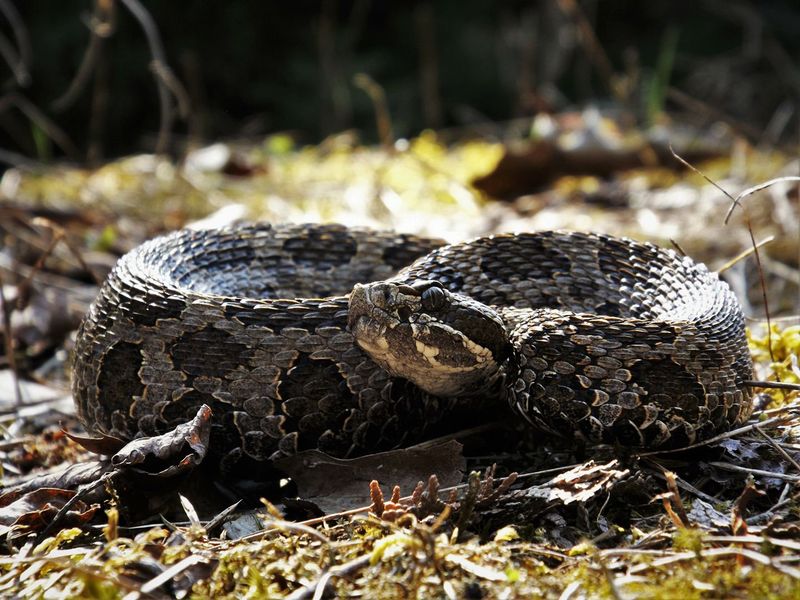
The Eastern Massasauga, while not as common as other rattlers, is a fascinating find in South Carolina’s wetlands and grasslands. Its light-colored body and segmented rattle are distinguishing features.
This shy species prefers to remain hidden and is more likely to be heard than seen. Its venom is potent but rarely fatal, and bites are relatively uncommon.
With a diet primarily of small rodents and amphibians, the Eastern Massasauga plays an important role in the control of these populations within its habitat.
Scarlet Kingsnake
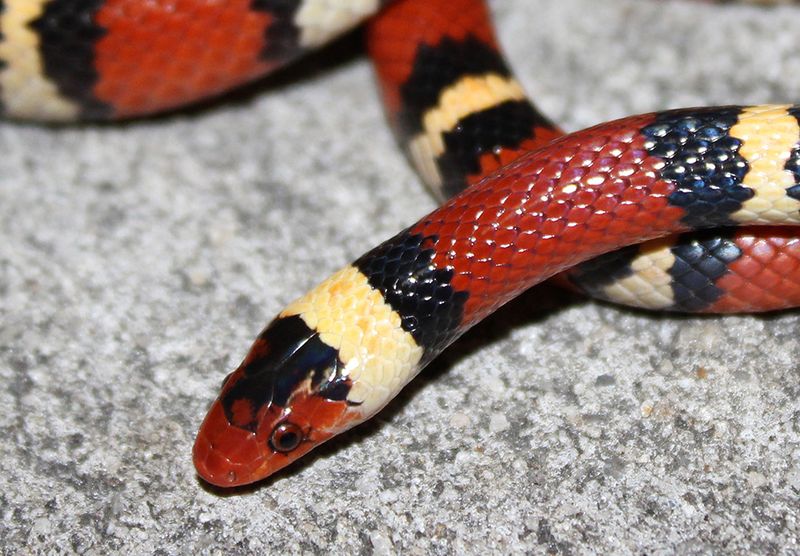
With its vivid red, black, and yellow bands, the Scarlet Kingsnake is a striking sight in the South Carolina landscape. This non-venomous snake is often confused with the venomous coral snake, but a simple rhyme helps distinguish them: “Red touch yellow, kill a fellow; red touch black, friend of Jack.”
Preferring forested areas and marshlands, the Scarlet Kingsnake is a secretive creature, often hiding under logs and leaf litter. Its preference for secluded habitats makes encounters with humans rare, but when spotted, it captivates with its colorful display.
Did you know? The Scarlet Kingsnake’s mimicry is an effective defense mechanism, deterring predators who mistake it for its venomous look-alike.
Rat Snake
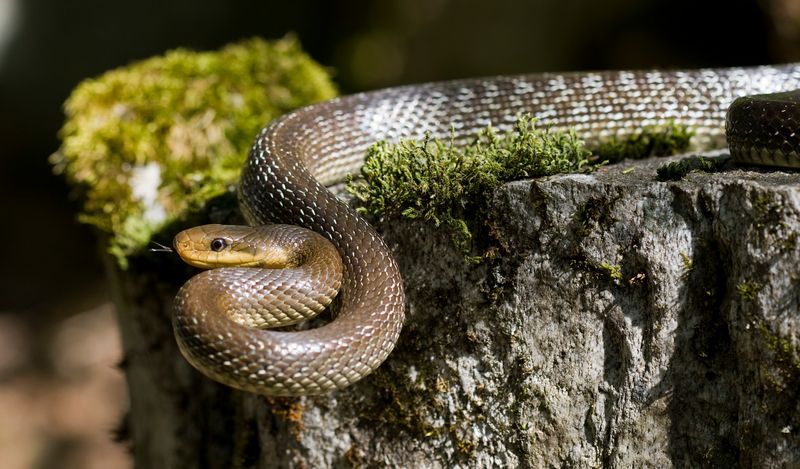
The Rat Snake, a common resident of South Carolina, is an expert climber, often seen weaving through the branches of trees in search of prey. Its diet mainly consists of rodents, making it a farmer’s ally in controlling pest populations.
These snakes are primarily found in forests, farmland, and even suburban areas, displaying a remarkable adaptability to different environments. Their glossy black scales and impressive size make them a standout in the snake world.
Fun fact: Rat Snakes are known for their docile nature, and they will often “freeze” when threatened, relying on their camouflage to evade danger.
Corn Snake
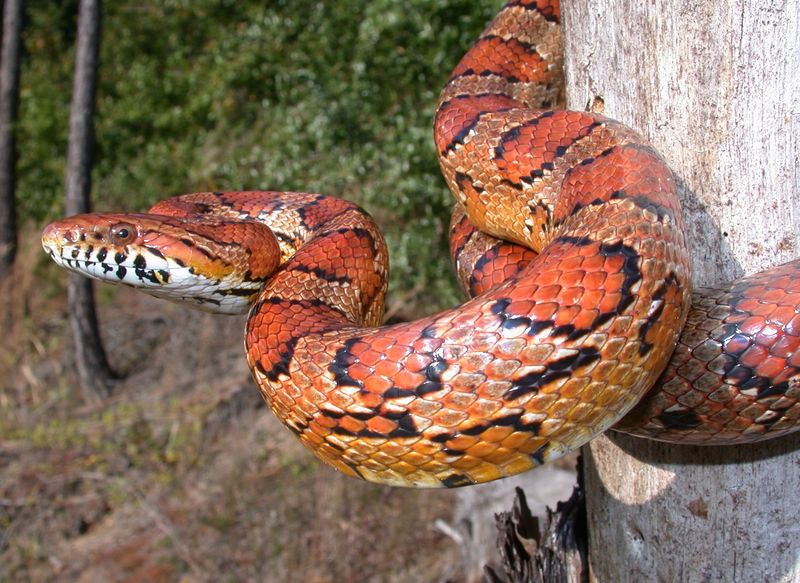
Corn Snakes are perhaps one of the most recognizable and beloved snakes in South Carolina. Their beautiful orange and brown patterns not only make them visually appealing but also serve a practical purpose, helping them blend into the forest floor.
These snakes are typically found in overgrown fields, forest edges, and abandoned buildings, where they hunt for mice and other small prey. Their calm demeanor and striking appearance have made them a popular choice among reptile enthusiasts.
Did you know? Despite their name, Corn Snakes don’t have a special affinity for corn. They were named for the corn-like pattern on their belly scales.
Western Diamondback Rattlesnake
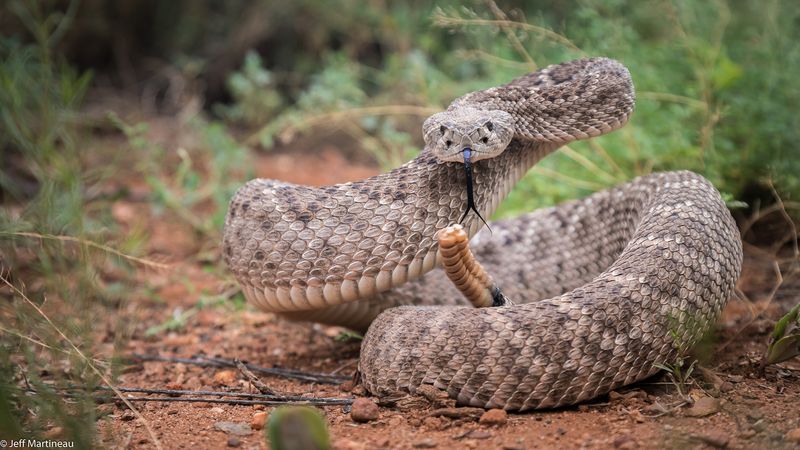
Renowned for its distinctive rattle, the Western Diamondback Rattlesnake is a symbol of the untamed wild. In the rocky areas of South Carolina, this snake’s presence is both feared and revered.
Observing this snake in its natural habitat requires respect and caution, as it plays a crucial role in controlling local rodent populations. It’s a living piece of the region’s rugged charm.
Red-bellied Snake
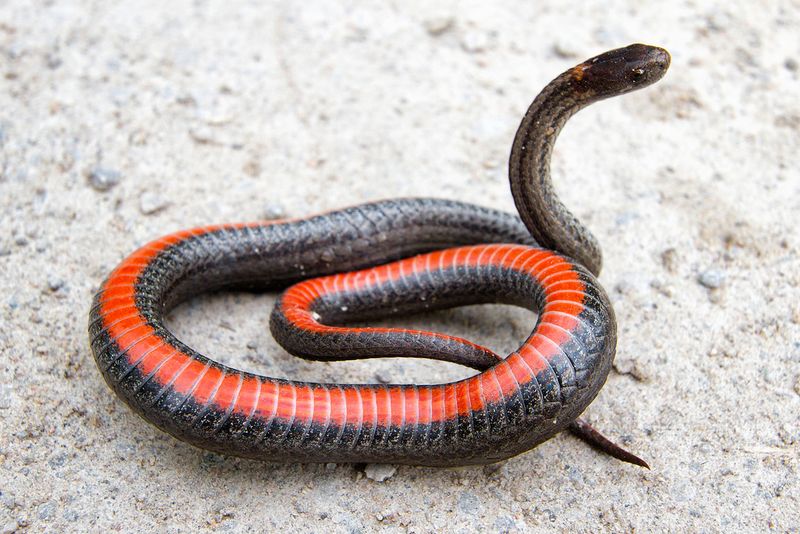
The Red-bellied Snake, while not venomous, is worth mentioning for its striking appearance in South Carolina’s meadows and forests. Its bright red belly is a stark contrast to its darker top.
This small snake poses no threat to humans, as it feeds primarily on slugs and insects. It is a secretive species, often hiding under rocks and logs.
Its presence is an indicator of a healthy ecosystem, where it contributes to pest control, and its vibrant coloration makes it a delightful find for wildlife enthusiasts.

